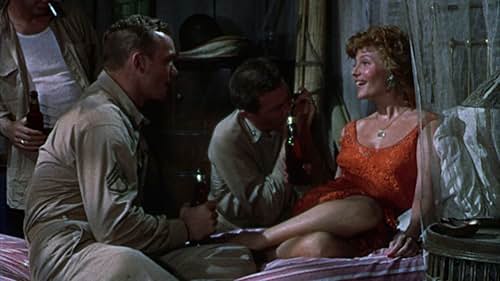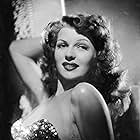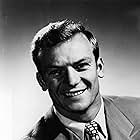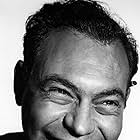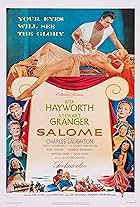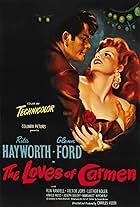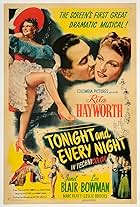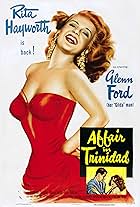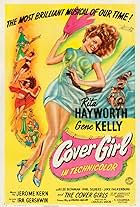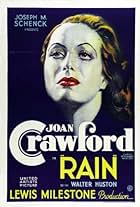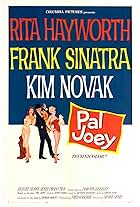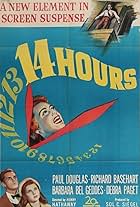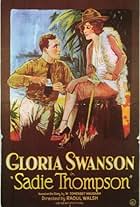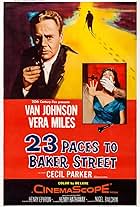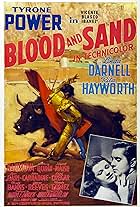IMDb RATING
5.9/10
1.8K
YOUR RATING
A self-righteous missionary man seeks to save the soul of a former prostitute.A self-righteous missionary man seeks to save the soul of a former prostitute.A self-righteous missionary man seeks to save the soul of a former prostitute.
- Nominated for 1 Oscar
- 2 nominations total
José Ferrer
- Alfred Davidson
- (as Jose Ferrer)
Charles Bronson
- Pvt. Edwards
- (as Charles Buchinsky)
Robert Anderson
- Dispatcher
- (uncredited)
Elizabeth Bartilet
- Child
- (uncredited)
Clifford Botelho
- Child
- (uncredited)
Erlynn Mary Botelho
- Child
- (uncredited)
George Bruggeman
- Marine
- (uncredited)
Eduardo Cansino Jr.
- Marine
- (uncredited)
- Director
- Writers
- All cast & crew
- Production, box office & more at IMDbPro
Storyline
Did you know
- TriviaTrying to take advantage of the 3-D fad of the early 50s, the film was shot in 3-D. But, by the time of the premiere on December 23, 1953, interest in 3-D had died down considerably. After a two-week run, all 3-D prints were pulled. The film was given a national release "flat", in other words, in regular prints.
- GoofsSergeant O'Hara's shirt is wet with sweat as he leaves the radio tent but dry as he exits.
- Quotes
Mrs. Davidson: Thank heaven she's gone. She disturbed Mr. Davidson horribly last night. He despises women of that kind.
Dr. MacPhail: The founder of our religion was not so squeamish.
- ConnectionsFeatured in Hollywood: The Great Stars (1963)
Featured review
Rita Hayworth hardly fit Somerset Maugham's physical description of Miss Sadie Thompson in his short story on which the film is based.
"She was twenty-seven perhaps, plump, and in a coarse fashion pretty. She wore a white dress and a large white hat. Her fat calves in white cotton stockings bulged over the tops of long white boots in glace kid".
However she captured the spirit of the character and I think the film does do justice to Maugham's story. It was updated to the 1950's and opened out with the introduction of other characters - Aldo Ray and his U.S. Marine buddies - but the conflict between the missionary and the bar girl thrown together in Pago-Pago when their ship is quarantined still has bite.
I first saw this film in the late 50's and thought it was pretty powerful - you didn't hear words like 'prostitute' bandied around too often in movies back then.
José Ferrer ate up the role of Mr Davidson, the missionary who sets himself up as the anti-fun police and attempts to save Sadie's soul whether she wanted it saved or not - all the while suppressing a dark side.
Aldo Ray was good as O'Hara, the tough marine sergeant who also wants to save Sadie from her previous life. The marines seemed a little over-caricaturised. It wouldn't have come as a surprise if they'd broken into a chorus of "There's Nothing Like a Dame".
But this film is Rita Hayworth's. Catching the brashness of Sadie, she showed her range; very different to the soft-voiced femme fatale she often played. She sings and dances with stocky Aldo Ray, and is still a luminous presence. According to Peter Ford's biography of his father, "Glenn Ford: A Life", Rita desperately wanted Glenn to play O'Hara and go to Hawaii with her. This was at a time when she was beginning to show signs of the problems that would blight the rest of her life - Glenn Ford always provided an emotional safety net for her.
This film looks good and the story of barely repressed lust with its shock ending still stands up. And of course, a film such as "Miss Sadie Thompson" takes on another dimension knowing the course of the lives of the fascinating people who made it.
"She was twenty-seven perhaps, plump, and in a coarse fashion pretty. She wore a white dress and a large white hat. Her fat calves in white cotton stockings bulged over the tops of long white boots in glace kid".
However she captured the spirit of the character and I think the film does do justice to Maugham's story. It was updated to the 1950's and opened out with the introduction of other characters - Aldo Ray and his U.S. Marine buddies - but the conflict between the missionary and the bar girl thrown together in Pago-Pago when their ship is quarantined still has bite.
I first saw this film in the late 50's and thought it was pretty powerful - you didn't hear words like 'prostitute' bandied around too often in movies back then.
José Ferrer ate up the role of Mr Davidson, the missionary who sets himself up as the anti-fun police and attempts to save Sadie's soul whether she wanted it saved or not - all the while suppressing a dark side.
Aldo Ray was good as O'Hara, the tough marine sergeant who also wants to save Sadie from her previous life. The marines seemed a little over-caricaturised. It wouldn't have come as a surprise if they'd broken into a chorus of "There's Nothing Like a Dame".
But this film is Rita Hayworth's. Catching the brashness of Sadie, she showed her range; very different to the soft-voiced femme fatale she often played. She sings and dances with stocky Aldo Ray, and is still a luminous presence. According to Peter Ford's biography of his father, "Glenn Ford: A Life", Rita desperately wanted Glenn to play O'Hara and go to Hawaii with her. This was at a time when she was beginning to show signs of the problems that would blight the rest of her life - Glenn Ford always provided an emotional safety net for her.
This film looks good and the story of barely repressed lust with its shock ending still stands up. And of course, a film such as "Miss Sadie Thompson" takes on another dimension knowing the course of the lives of the fascinating people who made it.
Details
- Release date
- Country of origin
- Language
- Also known as
- La bella del Pacífico
- Filming locations
- Production company
- See more company credits at IMDbPro
Box office
- Gross US & Canada
- $6,322,000
- Runtime1 hour 31 minutes
Contribute to this page
Suggest an edit or add missing content


